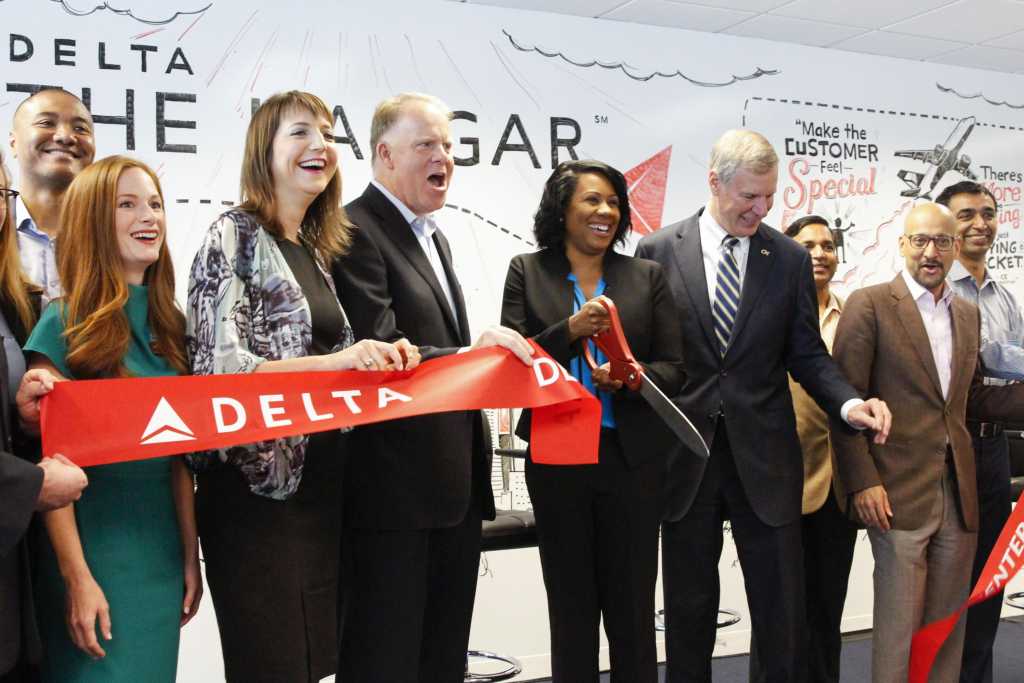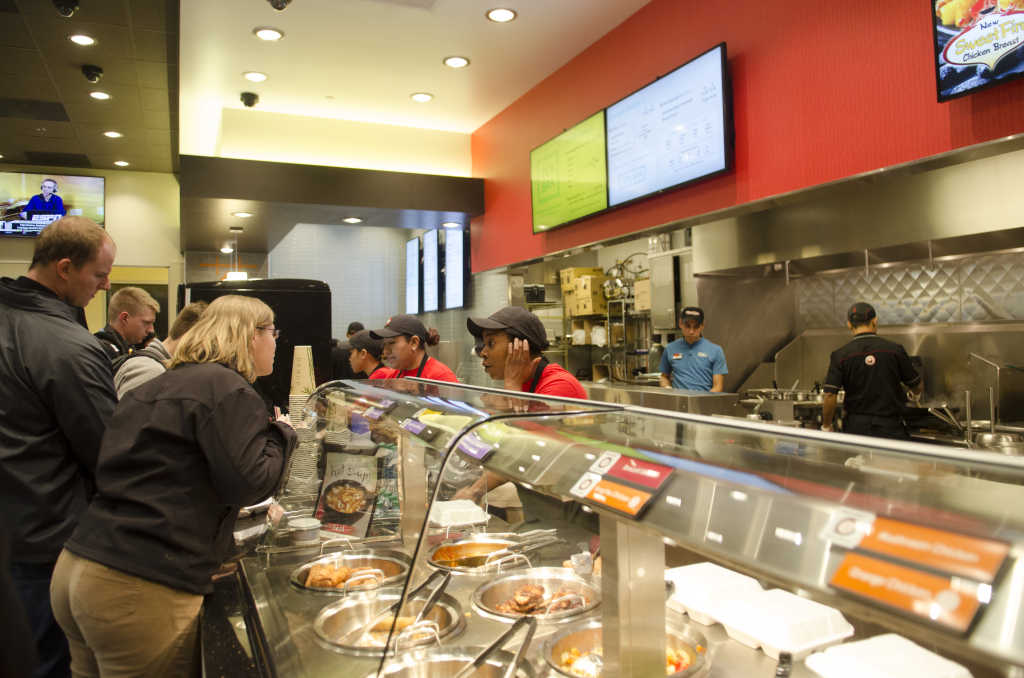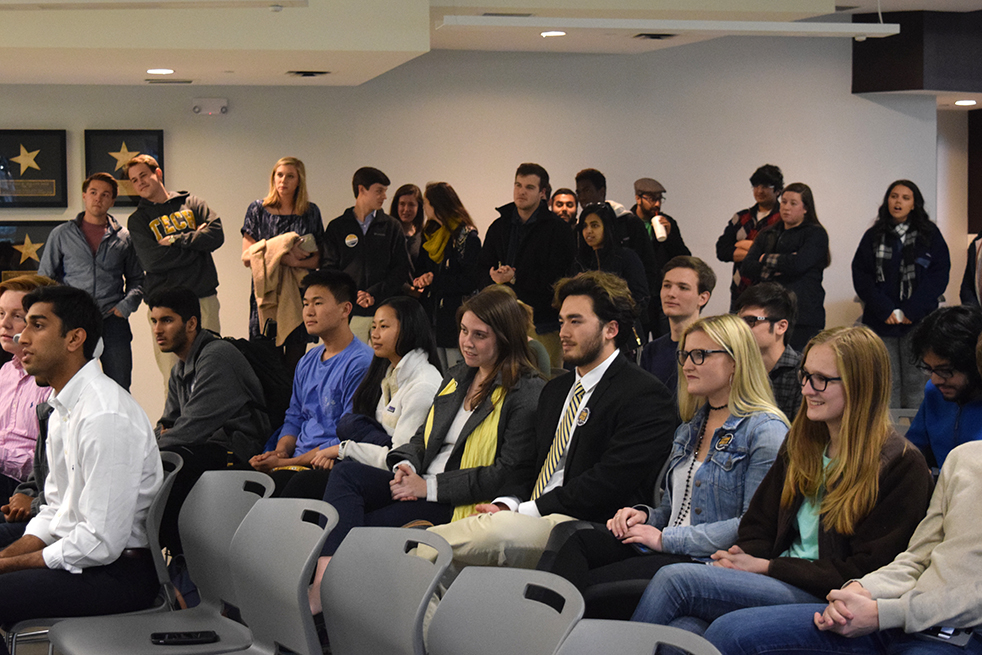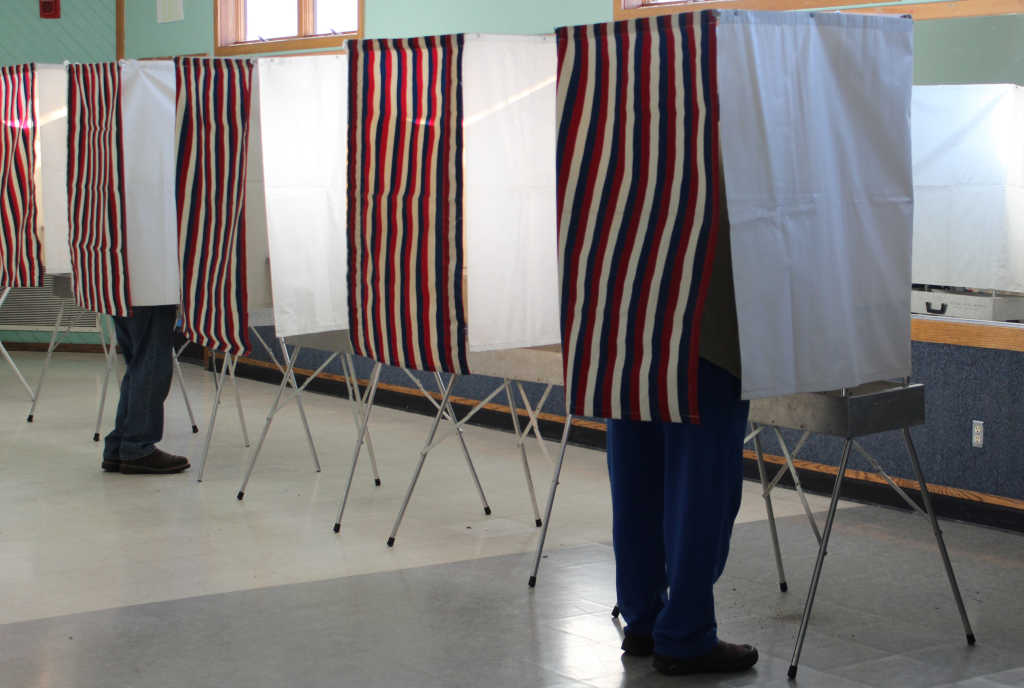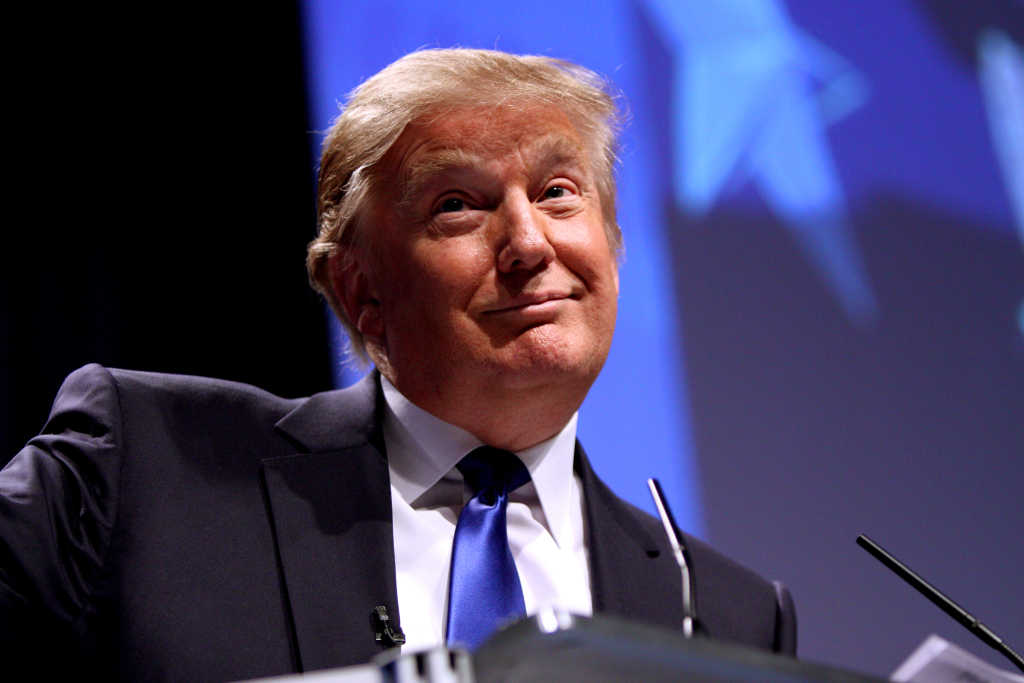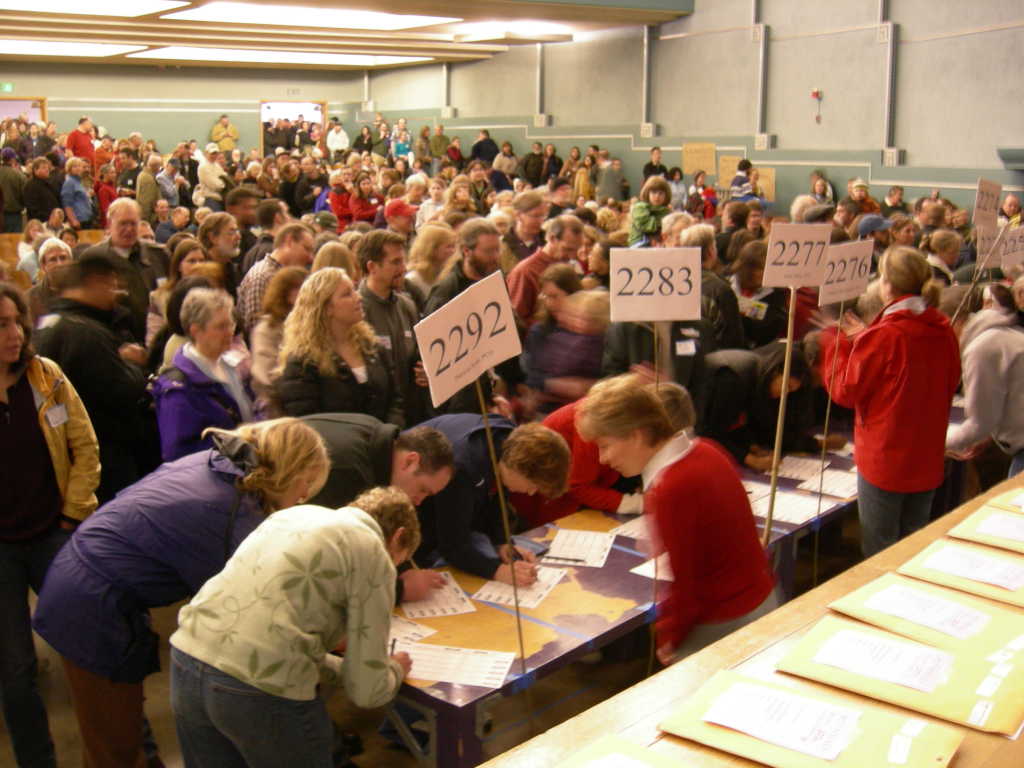Posted on 13 April 2016.

While politicians on America’s higher stage are discussing wages wars and walls, this year’s candidates for President and Executive Vice President of Tech’s Student Government Association (SGA) are focusing on issues much more local to the campus population. But, as in real politics, a ticket’s platform is only as good as its campaign; great ideas mean nothing if the voters can’t hear them. To make sure that the Tech population is properly informed, the four campaigns have been working tirelessly to bring awareness to their respective candidates and win the war of attrition that we call “SGA Elections.”
SARA DADA AND ANDREW PERRY
For the duo of Sara Dada, third-year PUBP and ECON, and Andrew Perry, third-year CS, the journey began on Oct. 1 of last year.
“One of the hardest things was that we were not allowed to tell anyone beforehand,” Dada said. “It took a lot for us to not tell everybody even though we wanted everyone’s input. That weekend Andrew and I met with Laura Margaret [Burbach] and told her what we were considering and asked what suggestions and advice that she had.”
Since then, they have put together a dedicated group of students to help run their campaign.
“When it comes to campaigning the best part was definitely putting our team together and being able to work on that from October,” Dada said. “We got [our first member] in October, and it has just kind of flowed from there. I don’t know how we would have survived this without them. They have been so integral to our platform, our materials, and just getting us through the day.”
A large part of their platform is “reaching the unreached,” as Dada put it, and that mindset has played a significant role in their campaign process. Their full platform can be found at dadaperry.com.
“We went to the women’s club volleyball team yesterday, and they said that they had never had an SGA candidate speak to them. It’s things like that. We want to talk to everyone. We want to establish personal connections with literally everyone that we can.”
“And reaching the unreached is a difficult task for anybody, especially a campaign,” Perry said. “When we were forming our platform we were thinking ‘How do we contact the people who do not want to be contacted, the people who are fine just coming here for academics or research?’ So we started off thinking about what affects everybody. CIOS. Syllabus stuff. So we kind of tackled those issues first.”
And while they are the only non-SGA ticket in the race, they believe that their fresh perspective and varied experiences will give them an edge.
“Although we actively started campaigning on October 1st, our campaign started when we walked onto campus,” said Perry. “It’s everything we have done beforehand that affects people’s idea of us.”
BRIAN SHIN AND MEGAN FECHTER
While they have campaign team as well, Brian Shin and Megan Fechter, both third-year BA, have decided to do most of the campaigning themselves.
“We have opted to do everything on our own,” Fechter said. “So from the website building brianmegan2016.com, flyer distribution, handing out our ‘Govern-mints’, even to scheduling organization meetings … that is completely us.”
“We think it’s important that organizations get emails from us, not a campaign manager,” Shin said of their strategy.
They began their campaign work much later than the other candidates, reaching full speed two or three weeks before Easter Sunday.
“Some campaign teams have been campaigning since November,” Fechter said. “Brian and I really just tried to take it day by day and organized our schedules to have time for school, the organizations that we love and campaigning.”
And even when campaigns were able to be officially announced, Easter Sunday, they held off.
“We decided to wait until late that night because it was Easter, and we knew a lot of people were celebrating and we didn’t want to be in the way of their celebration and their reflection of the day,” Shin said.
One of their biggest campaign tools have been the previously mentioned ‘Govern-mints’. On any given day Brian or Megan could be seen walking the streets of campus, giving students cleverly-named mints.
“We literally walk all over campus with them,” Fechter said. “We just wish people a good day and sometimes we are fortunate enough to sit down with them and talk to them about their lives and what they want to see changed.”
NAGELA NUKUNA AND SHANE MUDRINICH
Like Dada and Perry, the ticket of Nagela Nukuna, third-year IE, and Shane Mudrinich, third-year BIOCHEM, decided to run in October.
“We had talked about it before,” Mudrinich said. “It was almost light-hearted, like ‘woah could you imagine,’ and then this year we decided to go at it and do some good. We started reaching out to people in late October. We had to establish our vision, our objectives, and how we want to represent the student body.”
“The platform itself was easy,” Nukuna said. “We didn’t have to meet with administration because we already knew what was going on around campus. We were already very plugged in. But organization-wise and finding people that fit our team best and who could reach out to campus for us, that took a little bit of time.” Their full platform can be found on nagelashane2016.com.
The pair has put a large emphasis on getting visibility for their campaign.
“We are trying to advertise super heavily,” Nukuna said. “We put fliers in all of the napkin dispensers on campus and put signs outside the CRC and just looked for ways to be innovative and creative.”
That doesn’t mean there hasn’t been any personal communication, however.
“We have been emailing orgs, Facebook messaging officers, trying to communicate with everybody we possibly can to make it personal,” Mudrinich said. “We want to say ‘This is what we want to do on campus and we would love to chat with you about it.’ We want to know what is really on people’s minds.”
In their opinion, their videos on social media have been their most effective campaign tool. One in particular, ‘Nukuna Mudrinich’, a play on “Hakuna Matata” from Disney’s “The Lion King,” was a big hit on campus.
“Bharat Sanders [our videographer] works so tirelessly and the videos all come out looking so professional and well done,” Shane said.
ANJU SURESH AND BEN NICKEL
Anju, third-year IE, and Ben, third-year IE, were ready to get their campaign moving right out of the gate.
“We met up the first week of school to discuss issues around campus and strategies for really understanding the unique perspective of each Georgia Tech student,” Suresh said. “After that, we started reaching out to individuals to create a team, build a platform, and start our journey.”
Their campaign has focused more on the issues than simply getting their names ingrained into the student body’s consciousness.
“We are very impressed by the creativity of some of the other candidates in terms of marketing,” Suresh said. “Creativity in reaching people is key and we think that other candidates are doing an amazing job doing that through marketing. Our most successful tool has really been ensuring we are the most prepared candidates for the job. We believe so strongly in our platform and experience and have used that as a rock for our campaign.”
Their webmaster, Craig Owenby, created their campaign’s website from scratch. With such a strong focus on their platform, their web presence has been invaluable in spreading their message to the Tech community.
“On the main page of our website, anjuandben.com, we’ve listed out how our platform directly impacts a few of [Tech’s] communities specifically,” Suresh said. “We stand by the fact that we have a comprehensive platform, covering issues not often discussed such as promoting performing arts or ensuring sustainability efforts on campus.”
But no matter who is inducted when the dust has settled, Anju and Ben are confident that SGA, and the Tech community as a whole, will thrive.
“It is amazing to see so many qualified and passionate student leaders step up to run for these positions,” Nickel said. “When we first started this journey, we never expected to have four tickets running. That being said, it is a blessing to know that Tech will end up in such great hands no matter who wins.”
Voting is currently taking place on the SGA elections website elections.gatech.edu and will conclude April 13 at 4 p.m.
